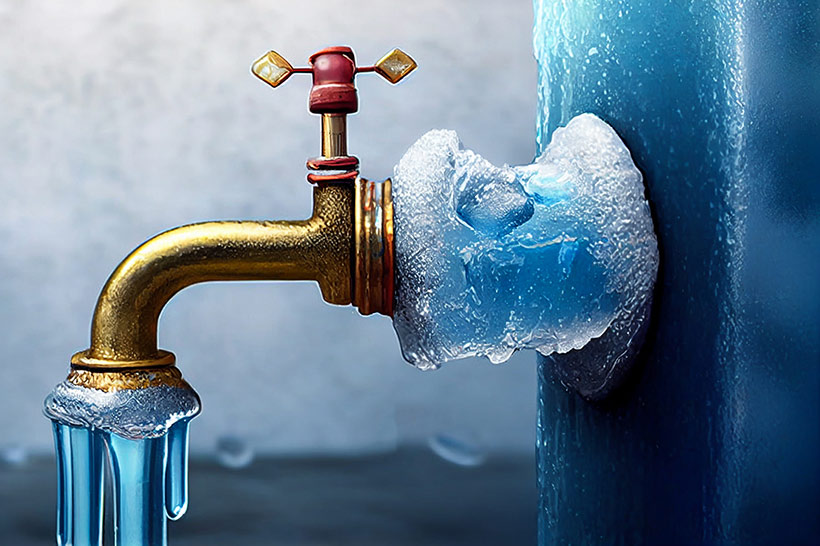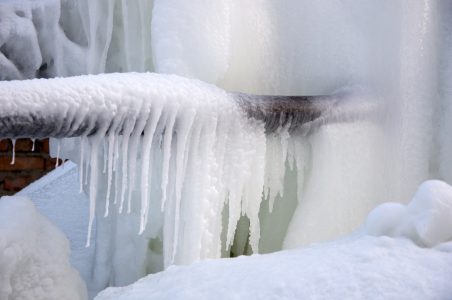Tips for Avoiding Frozen Plumbing in Cold Weather: Professional Advice
Tips for Avoiding Frozen Plumbing in Cold Weather: Professional Advice
Blog Article
Every person has their own individual opinions involving 6 Ways to Prevent Frozen Pipes.

Cold weather can wreak havoc on your pipes, specifically by freezing pipelines. Here's exactly how to avoid it from taking place and what to do if it does.
Intro
As temperature levels decline, the threat of icy pipelines rises, possibly leading to costly repair work and water damages. Recognizing how to prevent frozen pipes is critical for homeowners in chilly environments.
Avoidance Tips
Shielding vulnerable pipes
Wrap pipes in insulation sleeves or use heat tape to safeguard them from freezing temperatures. Concentrate on pipelines in unheated or exterior locations of the home.
Home heating methods
Keep indoor rooms effectively heated up, especially locations with plumbing. Open up cabinet doors to allow cozy air to circulate around pipelines under sinks.
Exactly how to determine icy pipelines
Search for decreased water circulation from faucets, uncommon smells or sounds from pipelines, and visible frost on exposed pipes.
Long-Term Solutions
Structural modifications
Take into consideration rerouting pipelines away from exterior wall surfaces or unheated areas. Add extra insulation to attics, cellars, and crawl spaces.
Upgrading insulation
Invest in high-grade insulation for pipelines, attics, and wall surfaces. Proper insulation aids keep constant temperature levels and minimizes the danger of frozen pipelines.
Securing Outdoor Plumbing
Garden hoses and outside faucets
Detach and drain garden hose pipes before winter months. Install frost-proof spigots or cover exterior taps with protected caps.
Recognizing Frozen Pipes
What causes pipes to ice up?
Pipelines ice up when subjected to temperature levels below 32 ° F (0 ° C) for extended periods. As water inside the pipelines freezes, it expands, taxing the pipeline walls and potentially creating them to break.
Dangers and damages
Icy pipelines can bring about supply of water disturbances, residential or commercial property damage, and costly fixings. Ruptured pipes can flood homes and cause considerable structural damage.
Indications of Frozen Piping
Recognizing icy pipes early can avoid them from bursting.
What to Do If Your Pipelines Freeze
Immediate actions to take
If you suspect frozen pipes, maintain faucets open to alleviate stress as the ice melts. Use a hairdryer or towels soaked in warm water to thaw pipes gradually.
Final thought
Protecting against frozen pipelines needs proactive procedures and fast responses. By recognizing the causes, indicators, and safety nets, house owners can protect their plumbing during winter.
5 Ways to Prevent Frozen Pipes
Drain Outdoor Faucets and Disconnect Hoses
First, close the shut-off valve that controls the flow of water in the pipe to your outdoor faucet. Then, head outside to disconnect and drain your hose and open the outdoor faucet to allow the water to completely drain out of the line. Turn off the faucet when done. Finally, head back to the shut-off valve and drain the remaining water inside the pipe into a bucket or container. Additionally, if you have a home irrigation system, you should consider hiring an expert to clear the system of water each year.
Insulate Pipes
One of the best and most cost-effective methods for preventing frozen water pipes is to wrap your pipes with insulation. This is especially important for areas in your home that aren’t exposed to heat, such as an attic. We suggest using foam sleeves, which can typically be found at your local hardware store.
Keep Heat Running at 65
Your pipes are located inside your walls, and the temperature there is much colder than the rest of the house. To prevent your pipes from freezing, The Insurance Information Institute suggests that you keep your home heated to at least 65 degrees, even when traveling. You may want to invest in smart devices that can keep an eye on the temperature in your home while you’re away.
Leave Water Dripping
Moving water — even a small trickle — can prevent ice from forming inside your pipes. When freezing temps are imminent, start a drip of water from all faucets that serve exposed pipes. Leaving a few faucets running will also help relieve pressure inside the pipes and help prevent a rupture if the water inside freezes.
Open Cupboard Doors
Warm your kitchen and bathroom pipes by opening cupboards and vanities. You should also leave your interior doors ajar to help warm air circulate evenly throughout your home.

We hope you enjoyed reading our topic about Preventing and dealing with frozen pipes. Many thanks for taking a few minutes to read our article. Sharing is caring. You never know, you may very well be helping someone out. We treasure your readership.
Show Details Report this page